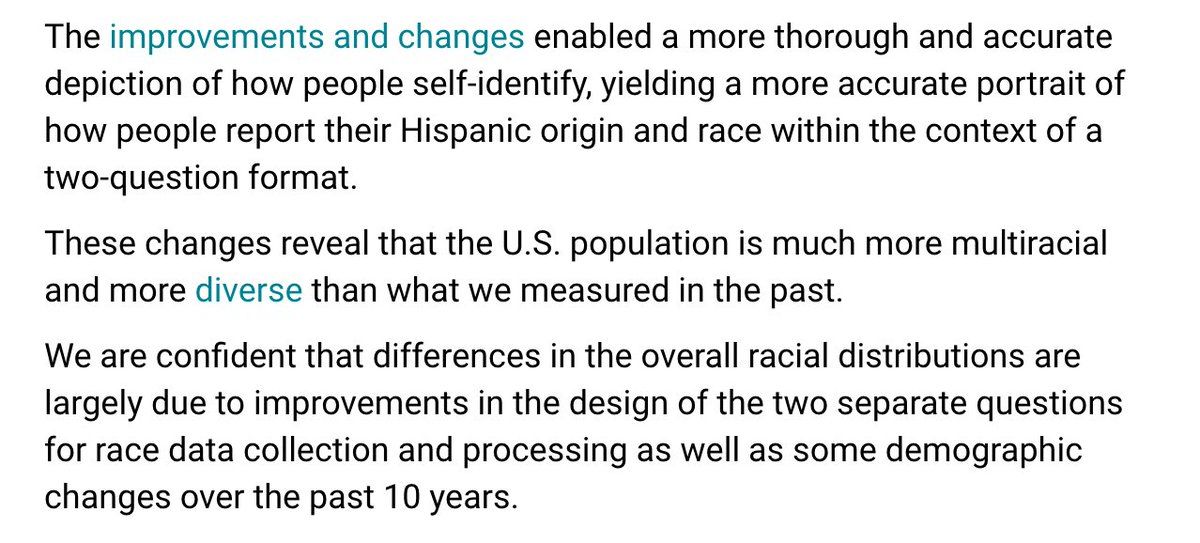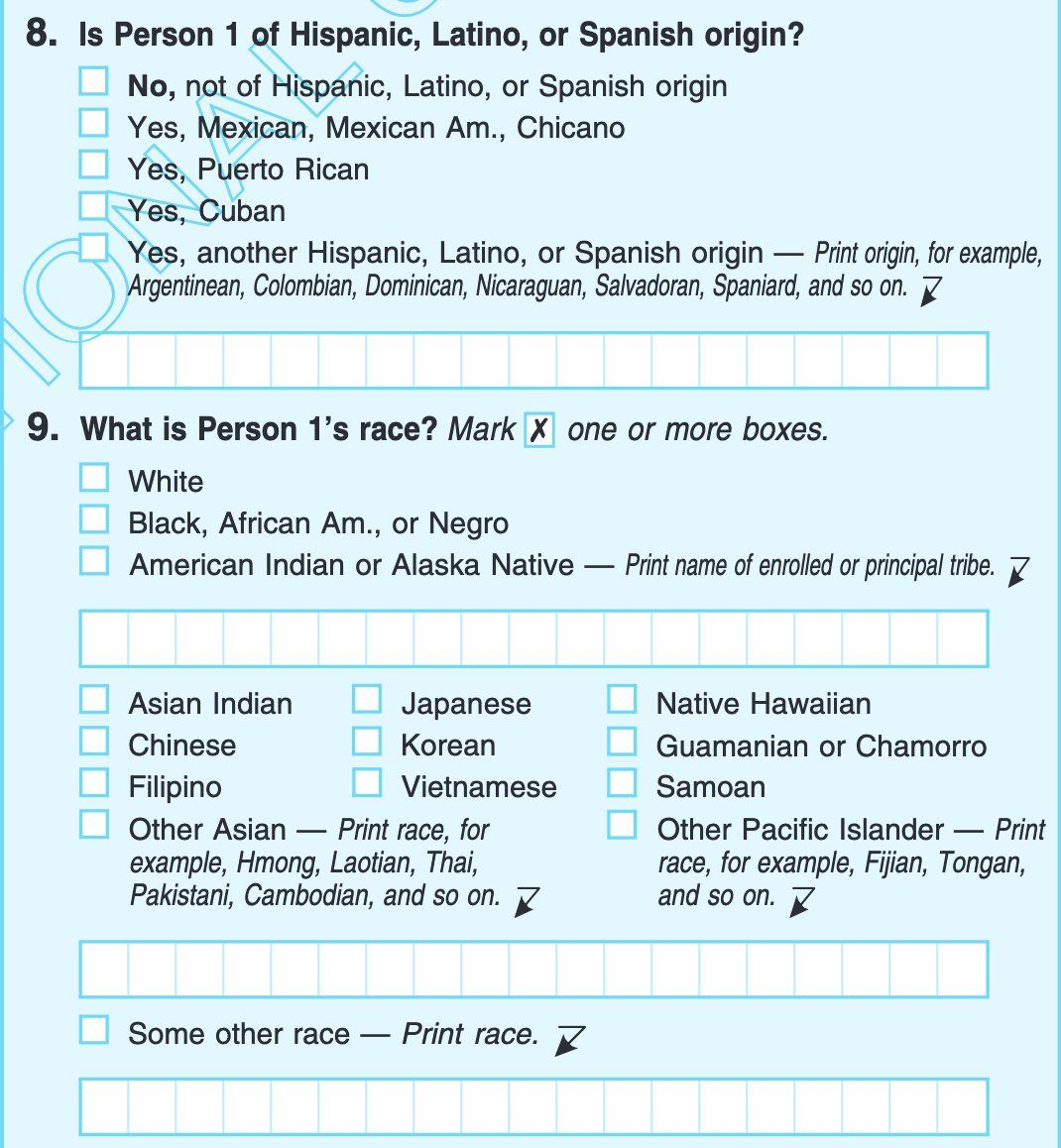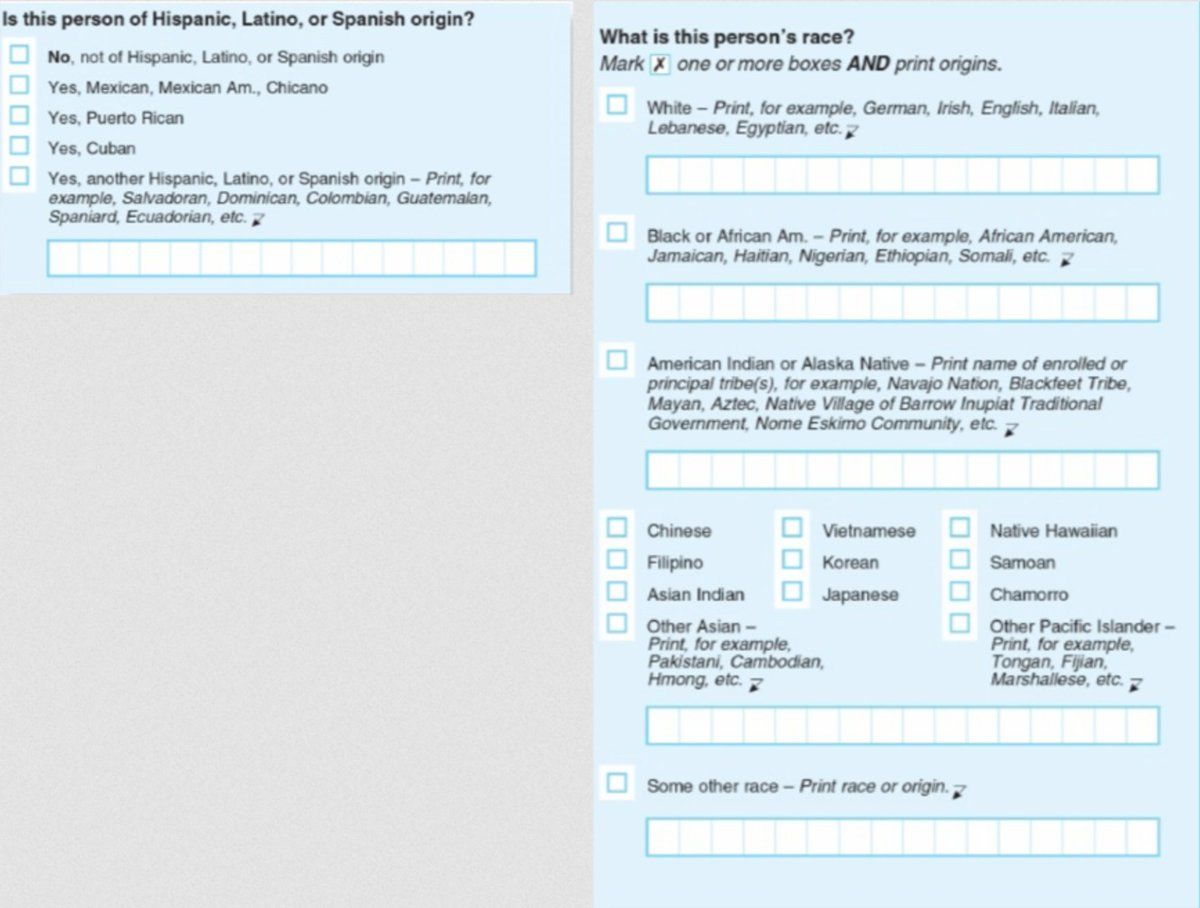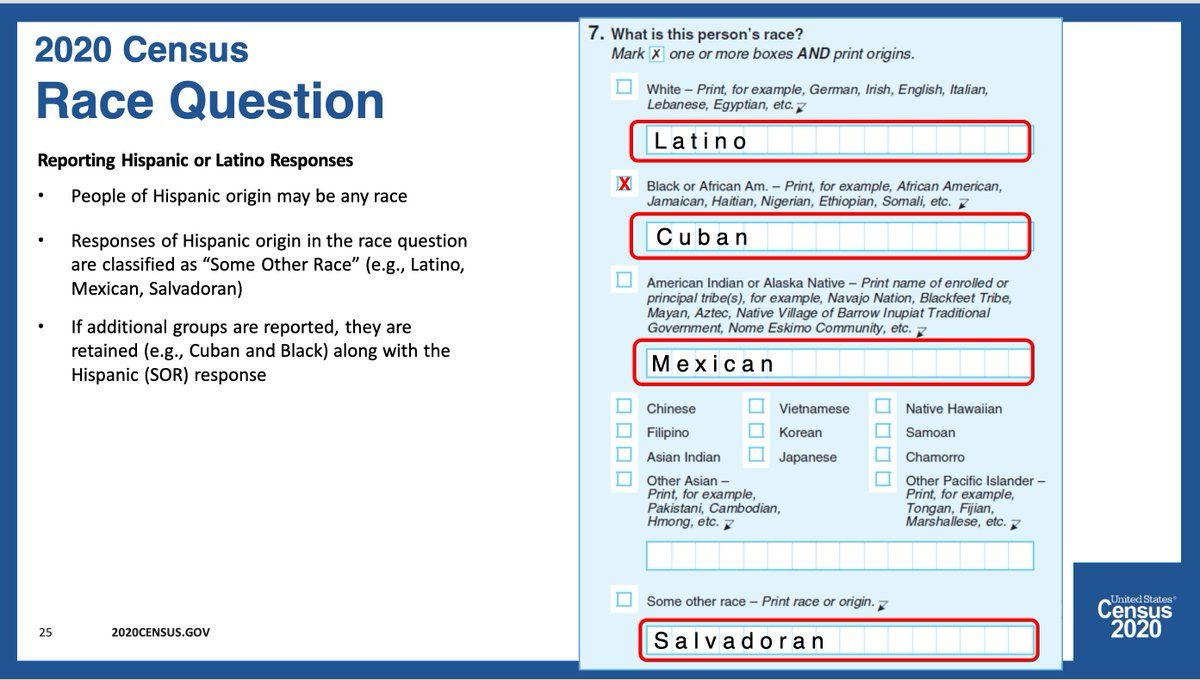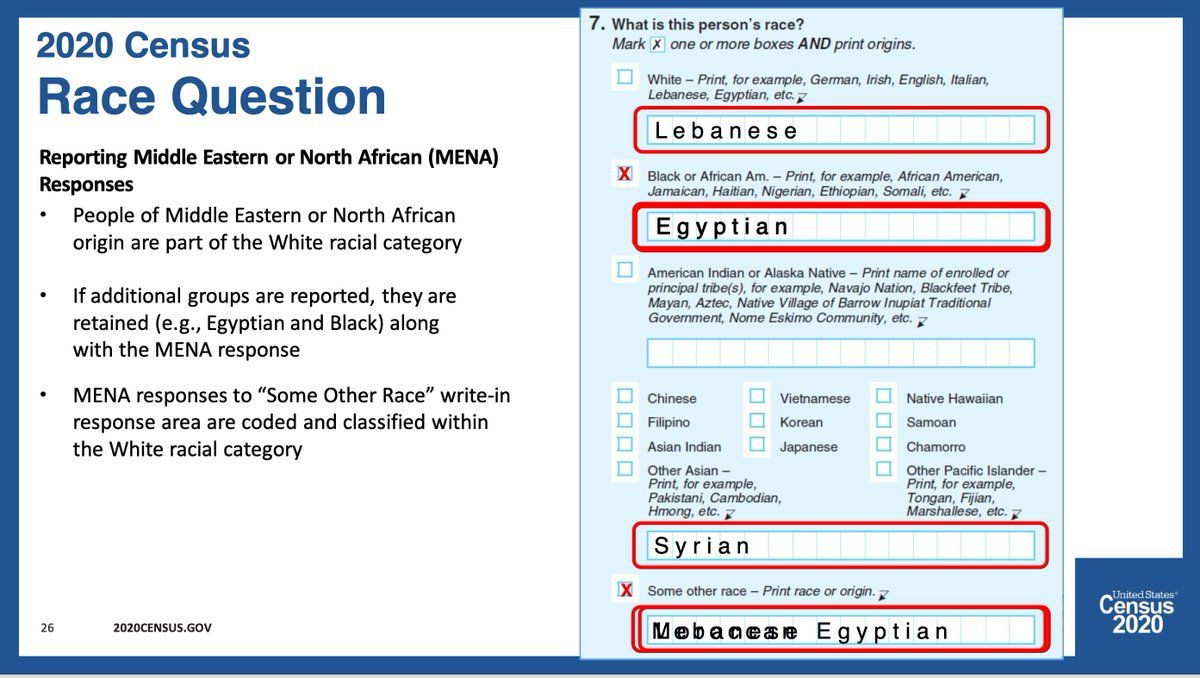-
Today's Census report shows huge growth in "Multiracial" and "Some Other Race" populations, and corresponding shrinkage of "White alone" numbers. Your brain is probably misinterpreting these numbers. Here's why… 🧵
-
The cognitive biases of living in a racialized society are probably making you misunderstand this Census data. First off, you think race is an immutable characteristic, when it's not.
-
By default, you interpret "white people" or "multiracial people" as something like a population of animals that only grows and shrinks when its members are born or die.
-
But to interpret Census or survey data, you need to think of "white people" as "the people who checked white and no other racial group on Question 7 on the Census form."
-
If that number went down (and it did: washingtonpost.com/dc-md-va/2021/08/12/census-data-race-ethnicity-neighborhoods/) it was largely because people who checked "white people" alone* in 2010 had more complex answers in 2020. * <--- I'll get back to that asterisk.
-
There are some purely demographic trends that have been playing out for a long time here too, but they account for single-digit millions over the last decade, not the tens of millions that are grabbing headlines.
-
There were huge shifts in the numbers of people counted as "some other race" and as "multiracial" between the 2010 and 2020 Census. Most of these changes happened because the Census changed how it asked and scored the answer to questions.
-
These changes were done on purpose, and are intended to yield "a more thorough and accurate depiction of how people self-identify, yielding a more accurate portrait of how people report their Hispanic origin and race." census.gov/library/stories/2021/08/improved-race-ethnicity-measures-reveal-united-states-population-much-more-multiracial.html
-
In other words, if the 2010 US population had filled out the 2020 Census form, the results would have been very similar to today's data release.
-
Very few of these 24 million additional people in the multiracial category are newly born children or immigrants.
-
In fact, 19 million of the additional 24 million "multiracial Americans" are people who "checked" Some Other Race. Some other race either appears in grey or isn't mentioned in many of these news stories, but it too exploded in the 2020 Census.
-
People categorized as "some other race" went from 19,107,368 to 27,915,715. This case was very complicated because…
-
1. Many Hispanic/Latinx people check some other race when they don't want to choose one of the other answers to the race question. Or they check both. theatlantic.com/politics/archive/2016/08/the-rise-of-the-others/497690/
-
2. Under orders from the OMB to treat Hispanic/Latinx origin separately from race, the Census handles all Latin American ethnicities as "some other race," while filing other ethnicities according to their race.
-
This means that some people who checked "white" but wrote in a Latinx term under race were counted as white. (That was the asterisk above.)
-
The flip side of these gains through different answers and recategorization is the shrinkage of the white category. White alone went from 224M down to 204M But white-SOR went up by 17.6M, nearly 90% of the "white decline."
-
Because the white population is older, and has fewer children, white deaths began to outnumber births in 2016. But we're talking a loss of 40,000 in 2016, not enough to add up to millions in the four years since. nytimes.com/2018/06/20/us/white-minority-population.html
-
It's only because we believe in the illusion of race that we assume that Census results are mostly about birth and death, not about how people fill out forms and how those forms are counted.
-
The dramatic story about today's Census data can be better explained by social scientists who do survey work than by demographers concerned with births and deaths. The Census Bureau write-up is a good place to start: census.gov/library/stories/2021/08/improved-race-ethnicity-measures-reveal-united-states-population-much-more-multiracial.html
